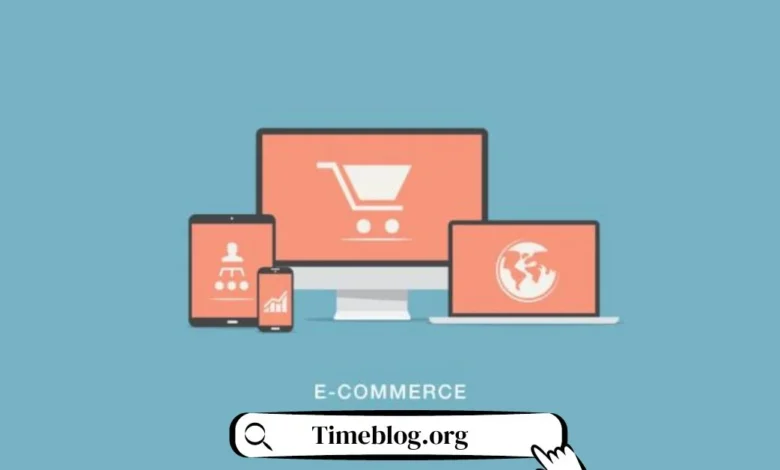How to Create a Killer Homepage for Your E-Commerce Website?

If websites are not captivating and engaging, they are NOTHING! This statement is particularly true with e-commerce websites. Matching up with their fast-paced nature, where online shoppers have countless options at their fingertips, the website must be equally engaging.
The website’s homepage is more special as it’s your digital storefront. If your homepage is not up to the standards, it can be rather difficult to attract customers. It also badly affects the rates of returning customers.
All in all, it’s essential to make a lasting impression with your homepage itself. Here’s a small guide to walk you through the process of a homepage website design in Melbourne.
The Purpose of Your Homepage
Your homepage acts as a virtual front door to your online store, and its objectives are multifaceted. So, before getting into the specifics of a professional website design in Melbourne, you must understand a homepage’s primary purposes.
Here are the 5 main goals of homepage design.
1. First Impressions Matter:
As soon as they enter, your homepage should make an immediate and positive impression on visitors. It should reflect your brand’s identity, values, and aesthetics. Your visitor will further explore your website only when the first impression is satisfying.
2. Navigation and User Experience:
It must provide clear navigation and an intuitive user experience. Visitors should easily find what they’re looking for, whether it’s products, categories, or information.
3. Showcase Products:
The homepage is an ideal place to showcase your best-selling or new products, promotions, and featured collections. These elements can pique visitors’ interest and encourage exploration.
4. Build Trust:
Establish trust with your audience by displaying trust badges, customer testimonials, and guarantees. It reassures visitors that your e-commerce website is safe and reliable.
5. Conversion Funnels:
Drive visitors deeper into your website through well-placed call-to-action buttons and links that lead them to specific product pages, categories, or promotions.
Now, let’s dive into the practical steps to create an effective homepage that accomplishes these objectives.
1. Streamlined Design and Layout
A cluttered homepage can overwhelm visitors and drive them away. Opt for a neat and visually appealing design with a clear hierarchy. Here are some tips:
- Use a visually appealing, high-resolution hero image or video that represents your brand and products.
- Organize content with a grid layout, making it easier for users to scan and navigate.
- Prioritize essential elements like the search bar, product categories, and featured products.
2. Clear Navigation
An intuitive navigation menu is vital for helping visitors find what they’re looking for quickly. Use clear and concise menu labels, and consider using drop-down menus for subcategories. Don’t forget to include a search bar prominently, as many users prefer searching for specific products.
3. High-Quality Imagery
Visuals play a significant role in e-commerce. Ensure your product images are high-resolution and showcase your products from various angles. Use professional photography to make your products look appealing and trustworthy.
4. Compelling Headlines and Copy
Use persuasive and concise headlines and product descriptions to capture visitors’ attention. Highlight unique selling points, such as quality, price, or exclusivity. Write engaging copy that resonates with your target audience and conveys your brand’s personality.
5. Promotions and Featured Products
Feature your best-selling or new products prominently on the homepage. Consider incorporating banners, sliders, or product carousels to showcase these items. Additionally, use eye-catching graphics to promote ongoing sales, discounts, or special offers.
6. Trust Signals
Building trust is essential for e-commerce success. Display trust signals such as security badges, SSL certificates, and customer reviews prominently. Highlight any awards, certifications, or affiliations that your business has received.
7. Customer Testimonials and Reviews
Include authentic customer testimonials and reviews to showcase the positive experiences of past buyers. These social proofs can significantly influence potential customers’ purchasing decisions.
8. Contact Information
Make it easy for customers to reach out to you if they have questions or concerns. Provide clear contact information, including a phone number and email address. You can also include a real-time chat feature for immediate support.
9. Mobile Responsiveness
Ensure that your homepage is fully responsive and optimized for mobile devices. With a growing number of shoppers using smartphones and tablets, mobile-friendliness is non-negotiable.
10. Analytics and Testing
Lastly, continuously monitor the performance of your homepage using web analytics tools. Pay attention to metrics like bounce rate, conversion rate, and user behaviour. Conduct A/B testing to optimize different elements of your homepage over time.
In Search of the Best Website Design in Melbourne?
Make My Website is one popular name we can think of for website design in Melbourne. Not only in web design, they are also well-experienced in SEO and content marketing services. Some of their previous works are displayed on their website. Check them out, and you can easily make a decision then.
Your e-commerce website’s homepage is a critical component of your online success. Finding the right professional does half of the job. So, research and make a wise choice. Good luck!




